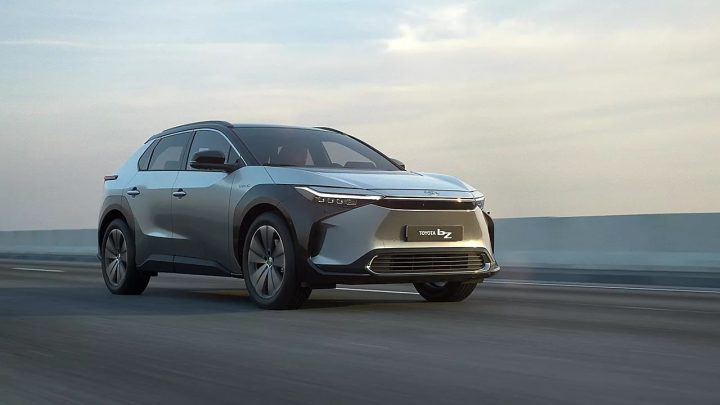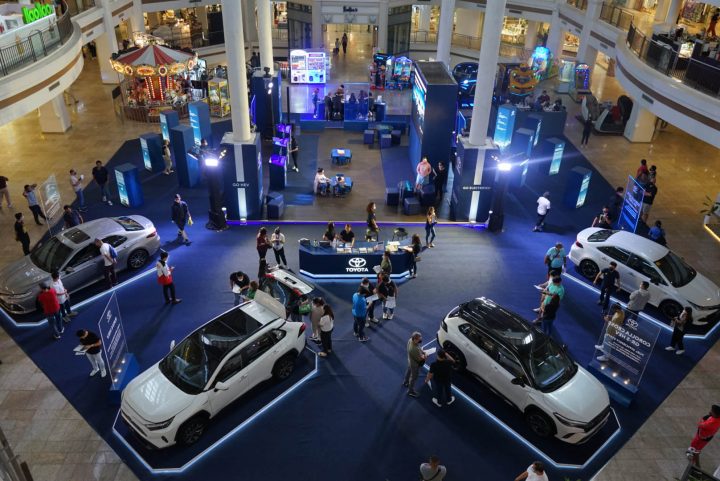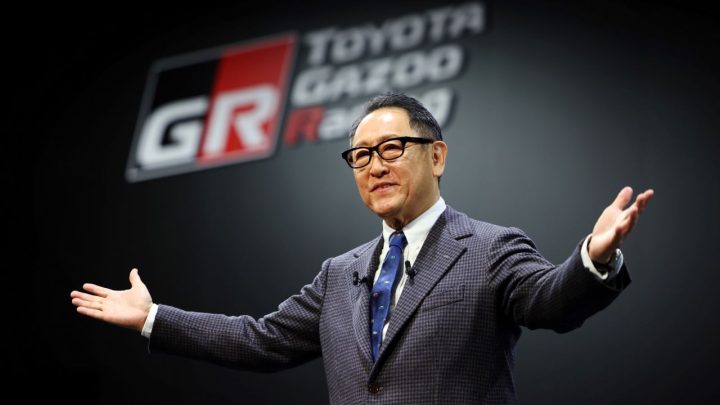
Toyota is, without a doubt, the world leader in automotive brands. Globally, they have topped vehicle sales for the past three years, and this is with great thanks to their offerings of vehicles with conventional internal combustion engines (ICE). With a new leader at the helm, Koji Sato, big plans are ahead for the Japanese giant. But these plans are not without problems, and even giants can get tripped and tangled.
With all manufacturers slowly but surely shifting towards the route of full electrification, Sato and the brand’s path is at a tipping point. With time “running out”, they have to find a way to speed up and beef up their electrified vehicle line. They have to if they don’t want to keep trailing, or worse, be left far behind.
Is Toyota taking too much time to get on board the full electrification bandwagon?

Photo: Toyota
How is Toyota doing as far as sales go? The past three years have been dominated by the brand as far as ICE vehicles go. According to reports, they managed to get a hold of 10.5 million unit sales last year alone, outselling the likes of Volkswagen Group and even the Hyundai-Kia Automotive Group. Battery electric vehicle (BEV) sales, though, are a much different matter.
Again, we are talking about the “full electrification” of vehicles, and Toyota does have some bold plans, targeting 3.5 million BEV sales by 2030. The current state as of the end of 2022’s fiscal year in March? 16,000 units which make up a paltry 0.2 % of total sales. Overall, the brand is currently ranked 27 in BEV sales across the globe, outdone by Tesla (no surprise), BYD Auto, Volkswagen, General Motors, and Geely Automobile Holdings who make up the top 5.
It’s not for a lack of trying, mind you. But the progress is, indeed very slow. The release of the Toyota bZ4X was greeted with a lot of excitement, but a recall mired the initial reaction. Since then, there’s been news of the bZ3 joining the EV stable, but apart from that, there has been little to no progress on any other BEV offerings. Lexus does have the RZ, the brand’s first fully-battery powered vehicle, but again, the question remains: where are all the other BEVs?

It’s foreseen that in about 10 to 15 years from now, large parts of the USA and Europe will be banning combustion engines, including hybrids, and will transition to battery-powered vehicles in the interest of a zero-carbon footprint. Reports from Japanese outfits recalled a statement made by Sato sometime in February that “his plan to ‘accelerate’ the development of BEVs will start with the Lexus brand by 2026, when the company aimed (sic) to launch a new BEV platform”. This is most concerning considering the here and now. Regardless of brand, that is three years away. Is Toyota starting from scratch, then?
Teetering at the tipping point, it’s known that Toyota has lobbied for the continued use of ICE and hybrid vehicles. One of their reasons is sound, though, and that is the fact that switching suppliers will undoubtedly affect the entire automotive sector, equating to many losing their jobs in what happens to be Japan’s key industry. How so?
“BEVs require about 35% fewer components than engine cars, and suppliers whose business has mainly centered on making engine parts
will definitely lose jobs,” according to Sanshiro Fukao of the Itochu Research Institute. But he likewise argues that advocating for a larger renewable energy industry will “create jobs”. This along with the concern about the supply chain constraints for Lithium and a lack of clean and renewable electricity sources as well as limited charging infrastructure are all lined up, contributing to Toyota’s seeming lag in responding to full electrification.

Photo: Toyota
Just this March, Akio Toyoda himself delivered a message to Japan’s domestic dealers, saying, “It is the responsibility of our generation to leave a beautiful Earth and abundant life to the next generation. But if we do things the wrong way, the automobile industry itself may crumble at its foundation. If that happens, what will happen to Japan?”
Somewhat similar to this sentiment, Sato was likewise quoted in February as saying, “I don’t deny that [BEVs] are one key option, but it’s ultimately about energy security. I think it’s truly important to secure alternatives that can endure diverse energy environments, instead of excessively inducing exclusive devotion to BEVs. Each region is completely different, and trying to respond with a single solution is quite unreasonable. There is an approach to carbon neutrality that is appropriate for each region.”
Apart from supplies, parts, and infrastructure, there’s also the issue of software management. Equally important with its components is the ability of a “modern” BEV to be updated, much like a common smartphone. Currently, Toyota is all about developing its proprietary software which as we all know takes time. This keeps costs low and allows proper control over intellectual property, but the option to hire more personnel or even buy technologies will be faster. Time is not on Toyota’s side, as we’ve come to conclude thus far.

Photo: Toyota
Experts in their home country of Japan have warned that this slow approach to addressing the full electrification situation could lead to the similar demise of early mobile phone giants. With the advent of smartphones, they were rendered inept, inert, and obsolete. Ultimately, what does Toyota have up its sleeve, seeing as they’re lagging behind and are in a precarious situation as an automobile brand and provider?
Whether his statement will inspire some form of confidence, Sato had this to say: “Our most important way of thinking about a carbon neutral future is to prepare a variety of options considering local differences in energy and economic environments as well as society and culture. Electricity, of course, but also hydrogen, and transiently hybrids and plug-in hybrids, are all promising technologies. We want to find possibilities in all options.”
Well and good, Sato-san. But the clock is ticking, and more than just the automotive industry, the world awaits.


